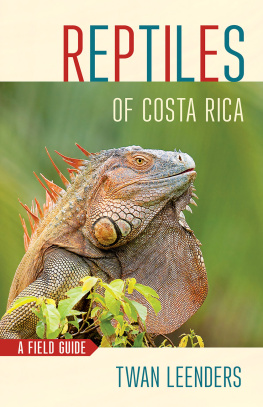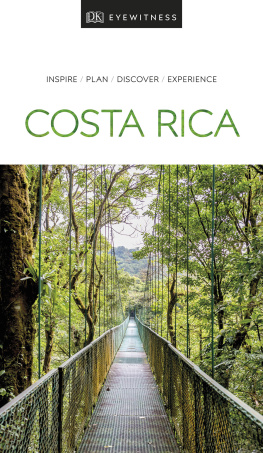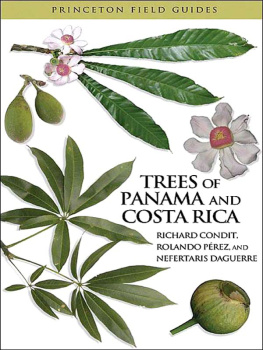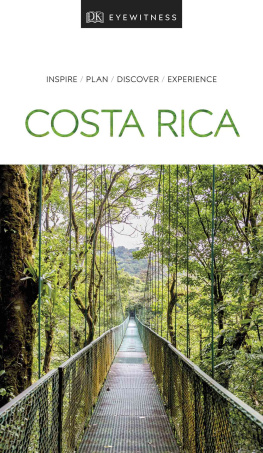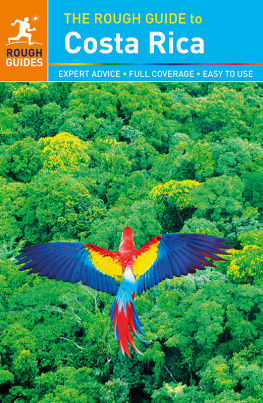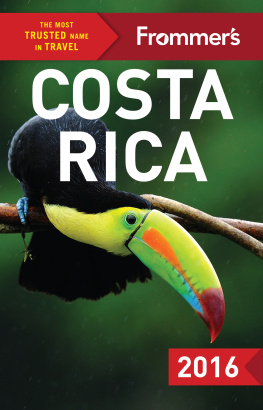Acknowledgments
I would like to thank the hundreds of students who shared their passion for biology with me over the past 25 years, and who have helped me find and study a wide variety of reptiles and amphibians. The community of photographers who participate in the Meet Your Neighbors global biodiversity project and who often share their gorgeous white-background photographs with the world has been a real inspiration. Thanks also go to my colleagues at the Roger Tory Peterson Institute of Natural History, who understand more than most how field guides can inspire people to appreciate the natural world around them. And, of course, there are my friends and family who have joined me at various points on this long journey. Without them I would not have been able to complete this work.
There are simply too many people behind this book to list them all. Some deserve special recognition, however, for their extraordinary help. My wife Casey and kids Madeleine and Jason have suffered through several book projects in recent years, and it never gets easier. My travels have ofen taken me away from home for weeks on end, and the time it takes to put these books together is generally measured in lost family time. I have said this before, but they have as much invested in my books as do I, and I am deeply grateful for their love, support, and understanding of what makes me tick.
Much appreciation also goes to my friends Alex Shepack, Tim Paine, and Sean Graesser, with whom I have shared many unforgettable times in the field over the years. Others who have generously contributed time, effort, and knowledgeand whose insights have contributed greatly to this bookinclude Csar Barrio-Amors, Jaime Culebras, Michael Fogden, Roel de Plecker, Cristian Porras Ramirez, Rob Puschendorf, Greg Watkins-Colwell, and Wendy Welshans. Special thanks go to Quetzal Dwyer, who is always quick to share his unrivaled knowledge of the reptiles of Costa Rica and who, on many occasions, has allowed me to photograph animals from his amazing collection at Parque Reptilandia.
Marshal Case and the Trust for Wildlife have supported my tropical conservation research and facilitated student participation in past years. Their invaluable help has contributed to the success of recent field work.
Many people have generously contributed photographs to this book. A complete list of all photographers and the images they provided can be found on page 617. Jaime Culebras, Stephane De Greef, Sean Graesser, Ray Morgan, Piotr Naskrecki, Cristian Porras Ramirez, Alex Shepack, Kevin Venegas Barrantes, and especially Roel de Plecker went out of their way to secure specific images for me; and Jos MartnezFonseca and Sebastian Lotzkat were especially generous in letting me use large numbers of their photographs. Instituto Clodomiro Picado generously allowed Jaime Culebras to photograph venomous snakes from its collection. Don Miguel Solano and Norberto Solano were of great help to Cristian Porras Ramrez in securing photographs.
Once again, it was John McCuen, of Hellbender Publishing and Zona Tropical Publications, who managed to somehow, miraculously, keep me and this project on track long enough to create the book you are now holding.
Thank you all!
Twan Leenders
Bibliography
For information beyond the scope of this field guide, or to explore in more detail the biology of Costa Ricas reptiles, there is a great variety of academic resources. An ideal place to start is Savage (2002), an encyclopedic work on the herpetofauna of Costa Rica, loaded cover to cover with detailed information. Solrzano (2004) is a bilingual resource focused entirely on the snakes of Costa Rica. Richly illustrated dichotomous identification keys for all reptiles of Central America can be found in Khler (2003). These books provide valuable additional information, though they all suffer from outdated taxonomy. Another good starting point is The Reptile Database (www.reptile-database.org), an online resource that provides regular updates on changes in taxonomy and distribution.
Abarca, J. (2006) Gecos caseros (Hemidactylus): biologa e impacto en Costa Rica. AmbienTico 159:2-6.
Acosta-Chaves, V., D. Araya-H. & M. Cabalceta (2015) Nature Notes: Norops woodi. Predation by a Red-headed Barbet (Eubucco bourcierii). Mesoamerican Herpetology 2(1):114-116.
Acosta-Chaves, V., G. Chaves, J.G. Abarca, A. Garca-Rodrguez & F. Bolaos (2015) A checklist of the amphibians and reptiles of Ro Macho Biological Station, Provincia de Cartago, Costa Rica. Check list 11(6):1784.
Arias, E. & F. Bolaos (2014) A checklist of the amphibians and reptiles of San Isidro de Do ta, Reserva Forestal Los Santos, Costa Rica. Check List 10(4):870-877.
Barrio-Amors, C. & R.A. Ojeda (2015) Nature Notes: Iguana iguanas. Predation by Tayras (Eira barbara). Mesoamerican Herpetology 2(1):112-114.
Beckers, G., T. Leenders & H. Strijbosch (1996) Coral snake mimicry: live snakes not avoided by a mammalian predator. Oecologia 106: 461-463.
Bienentreu, J.-F., A. Hertz, G. Khler & S. Lotzkat (2013) Distribution extension for Anolis salvini Boulenger, 1885 (Reptilia: Squamata: Dactyloidae), western Panama. Check List 9(1):169-174.
Booth, W., L. Million, R.G. Reynolds, G.M. Burghardt, E.L. Vargo, C. Schal & G.W. Schuett (2011). Consecutive virgin births in the New World boid snake, the Colombian rainbow boa, Epicrates maurus. J. Hered. 102, 75963.
Brown, T., M.P. van den Burg, D.F. Maryon & C. Arrivillaga (2018) Arboreality and diet in Pacific Long-tailed Snakes, Enulius flavitorques (Squamata: Dipsadidae), and a potential adaptive hypothesis for egg attendance in Honduran Leaf toed Geckos, Phyllodactylus palmeus (Squamata: Phyllodactylidae). IRCF Reptiles & Amphibian 25(1): 31-34.
Cadle, J.E. (2012) Cryptic species within the Dendrophidion vinitor complex in Middle America (Serpentes: Colubridae). Bull. Mus. Comp. Zool. 160(4): 183-240.
Cadle, J.E. (2012) Systematics of the Neotropical snake Dendrophidion percarinatum (Serpentes: Colubridae), with descriptions of two new species from western Colombia and Ecuador and supplementary data on D. brunneum. Bull. Mus. Comp. Zool. 160(6):259-344.
Cadle, J.E. & J.M. Savage (2012) Systematics of the Dendrophidion nuchale complex (Serpentes: Colubridae) with the description of a new species from Central America. Zootaxa 3513:1-50.
Cadle, J.E. & J.M. Savage (2014) Systematics of the neotropical snake Dendrophidion paucicarinatum (Cope), with a description of its hemipenis (Serpentes: Colubridae). Bull. Mus. Comp. Zool. 161(4): 111138.
Campbell, H.W. (1973) Ecological observations on Anolis lionotus and Anolis poecilopus (Reptilia, Sauria) in Panama. Amer. Mus. Nov. 2516: 1-29.
Campbell, J. A. & W.W. Lamar (2004) Venomous Reptiles of the Western Hemisphere. Cornell University Press, Ithaca, New York. 870 pp.
Campbell, J. A. & A. Solrzano (1992) The distribution, variation, and natural history of the Middle American montane pitviper, Porthidium godmani. In J. A. Campbell and E. D. Brodie Jr. (eds.), Biology of the Pitvipers, pp. 223-250. Selva, Tyler, Texas.
Castoe, T.A., P.T. Chippindale, J.A. Campbell, L.K. Ammerman & C.L. Parkinson (2003) Molecular systematics of the Middle American jumping pitvipers (genus Atropoides) and phylogeography of the Atropoides nummifer complex. Herpetologica 59(3): 420-431.
Censky, E.J. & C.J. McCoy, Jr. (1988) Female reproductive cycles of five species of snakes (Reptilia: Colubridae) from the Yucatan Peninsula, Mexico. Biotropica 20(4): 326-333.
Chaves, G., F. Bolaos, J.E. Rodriguez & Y. Matamoros (eds.) 2014 Actualizacin de las Listas Rojas nacionales de Costa Rica. Anfibios y reptiles. Taller Escuela de Biologa, San Pedro, Costa Rica. 50 pp.

